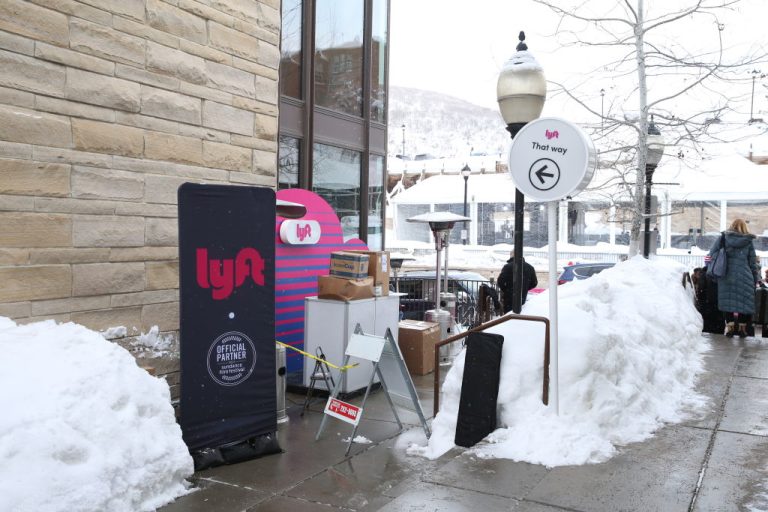One of the rideshare industry’s household names, Lyft, confirmed in a Security and Exchange Commission filing on April 27 that it would layoff 26 percent of its employees, amounting to 1,072 workers, in an effort to finally become profitable.
The move was publicized in advance to the media as a “plan” in an April 21 report by The Wall Street Journal, which noted that Lyft does not count drivers as employees.
Lyft published an email to staff members by CEO David Risher on the company blog following WSJ’s report, where he stated by April 27 “we’ll send an email with details on your employment status” while brick and mortar offices were closed.
FLIRTING WITH RECESSION
- Job Openings Plummet by 1.5 Million Year-over-year in Abysmal Monthly BLS Report
- Small Businesses Going Bankrupt 73% Faster Than Beginning of COVID Crisis
- Meet the Overemployed Who Moonlight With ChatGPT On the Sly for a Second Paycheck
Risher rationalized, “We need to be a faster, flatter company where everyone is closer to our riders and drivers so we can deliver on this purpose. And we need to bring our costs down to deliver affordable rides, compelling earnings for drivers, and profitable growth.”
“We intend to use these savings to invest in competitive pricing, faster pick-up times, and better driver earnings. All of these require us to reduce our size and restructure how we’re organized,” the CEO added.
Success
You are now signed up for our newsletter
Success
Check your email to complete sign up
In the SEC filing, Lyft added that it “has also decided to scale back hiring and has eliminated over 250 open positions.”
The company expects costs incurred from severance packages and benefits paid in the restructuring to cost between $41 and $47 million.
In the blog post, Risher stated severed employees would be granted “at least” 10 weeks of pay, health insurance through October and an acceleration in the company’s stock investment program.
Risher, a former executive with Amazon and Microsoft, assumed the position at the end of March after co-founders Logan Green and John Zimmer resigned from the CEO and President positions respectively and moved to instead hold the Chairman and Vice Chairman seats on the Board of Directors.
Lyft shareholders suffered a disastrous 2022, falling from a high of $46.64 on the third trading day of the year, land sliding to a low of $9.66 on Dec. 28.
Although the company briefly and strongly rallied to start 2023, posting a high of $18.36 on Feb. 8, just two days before the Q4 and FY22 earnings call.
When results showed that although Lyft grew revenue by 21 percent year over year, the company managed to lose almost twice as much money compared to 2021, sinking $588.1 million compared to $283.2 million, results were seen as so bleak by market makers that the stock cratered to slightly above $10 the next morning.
The downside was clearly attributed to staffing costs, the company noted when it stated that $201.3 million of the loss came from “stock-based compensation and related payroll tax expenses.”
The next earnings call is May 4, where Lyft will report Q1 2023 results. Analysts expect the company to report $981.5 million in revenue compared to the reported $1.175 billion in Q4.
April 27 marked a quintet of layoffs hitting the speculative venture capital sector.
Chief, a networking platform for women, said farewell to 14 percent of its staff, TechCrunch reported, noting this figure amounted to only 43 people.
Greenhouse, a company that sells human resources software, lost 100 people, amounting to 12 percent of its staff, it stated on its website.
Clubhouse, a chat app, announced it would part with no less than half of its staff, an undisclosed number, in a blog post on its platform.
But the most notable announcement of the day besides Lyft came from file sharing hallmark Dropbox, which announced it would sever 16 percent of employees: 500 people.
“First, while our business is profitable, our growth has been slowing,” said CEO Drew Houston.
Houston attributed the slowdown not only to the limitations of the company’s business model and the number of years it has saturated the market, but “headwinds from the economic downturn have put pressure on our customers and, in turn, on our business.”
“As a result, some investments that used to deliver positive returns are no longer sustainable,” Houston added.
In March, Vision Times reported that major U.S. retailers had already vacated 18,000 positions to start 2023.
While the figure may not sound dramatic, when compared to the same time in 2022, America’s layoffs were less than 800.
Professor at Santa Clara University, Audrey Guo, told NBC in a report on the rash of Bay Area layoffs, “There’s still a lot of uncertainty about whether we’ll be in a full-fledged recession or not.”
Guo explained, “It’s kind of like a double-edged sword where if we want to fight inflation, there does have to be a slowdown in economic growth…We can’t expect inflation and prices to come down if there aren’t some layoffs.”
















